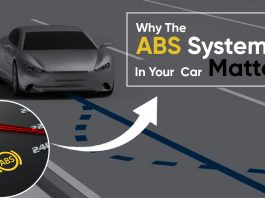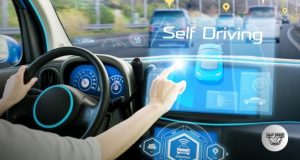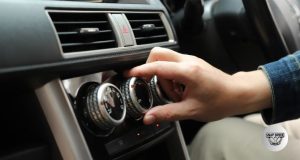Have you ever wondered what happens the moment you press your car’s brake pedal? The way your vehicle slows down or stops isn’t just about squeezing brake pads against wheels anymore.
Electronic Braking Systems (EBS) are changing the game, making your drives safer and smoother. Understanding how these systems work can give you a new level of confidence behind the wheel. Keep reading, and you’ll discover the smart technology that’s keeping you in control every time you hit the brakes.
Contents
Basics Of Electronic Braking
Electronic braking systems help cars stop safely and quickly. They use computers to control the brakes instead of just the driver’s foot.
This system improves safety by reacting faster and more precisely than a human can.
Components And Sensors
Electronic braking has many parts working together. Sensors check the car’s speed and wheel movement. The system uses this data to control braking.
- Wheel speed sensors detect how fast each wheel spins
- Brake pressure sensors measure how hard the brakes are pressed
- Electronic control unit (ECU) processes sensor data
- Actuators adjust brake pressure on each wheel
How Signals Control Braking
Sensors send signals to the ECU. The ECU quickly decides how much brake force each wheel needs.
The ECU sends commands to the actuators. Actuators change brake pressure to stop the car safely.
- ECU receives data from sensors
- ECU calculates needed braking force
- ECU sends signals to brake actuators
- Actuators adjust brakes on each wheel

Credit: gomechanic.in
Advantages Over Traditional Brakes
Electronic braking systems offer several benefits compared to traditional brakes. They use sensors and computers to control braking power.
This control helps improve braking performance and vehicle safety in many ways.
Improved Response Time
Electronic brakes react faster than mechanical systems. Sensors detect the need to brake instantly.
- Brake commands are sent quickly to the brake units.
- Less delay means shorter stopping distances.
- Improved response helps avoid accidents.
Enhanced Safety Features
Electronic braking systems add safety functions that traditional brakes lack. These features help maintain control and stability.
| Feature | Description |
| Anti-lock Braking System (ABS) | Prevents wheels from locking up during hard braking. |
| Electronic Stability Control (ESC) | Helps keep the vehicle stable during turns. |
| Brake Assist | Applies extra brake force in emergencies. |
Integration With Modern Vehicles
Electronic braking systems (EBS) are key parts of modern vehicles. They work with many other car systems to improve safety and control. These systems use sensors and computers to help stop the car faster and more smoothly.
The integration of EBS with new vehicle technologies makes driving safer. They communicate with other systems to adjust braking in real time. This helps drivers and supports new features in cars.
Compatibility With Autonomous Systems
Autonomous vehicles rely on precise control of the brakes. Electronic braking systems provide this control by connecting with the car’s main computer. This connection allows the car to brake automatically when needed.
- EBS sends data about wheel speed and brake pressure to the vehicle computer.
- The system adjusts brake force to match road conditions and speed.
- It helps the car stop safely in emergencies without driver input.
- Works with sensors like cameras and radar to detect obstacles.
Role In Advanced Driver Assistance
Advanced Driver Assistance Systems (ADAS) use EBS to improve safety. These systems include features like automatic emergency braking and lane keeping. EBS plays a big role in making these features work properly.
| ADAS Feature | How EBS Helps |
| Automatic Emergency Braking | EBS applies brakes quickly and smoothly to prevent collisions. |
| Adaptive Cruise Control | EBS adjusts speed by controlling brake pressure to keep distance. |
| Lane Keeping Assist | EBS helps slow the car if it drifts out of its lane. |
| Traction Control | EBS reduces wheel slip by modulating brake force. |

Credit: mechlesson.com
Future Trends In Braking Technology
Braking systems are evolving with new technology to make cars safer and smarter. Electronic braking systems are improving quickly. This article looks at future trends that will change how brakes work.
Two key areas leading this change are wireless brake systems and the use of artificial intelligence. These trends help create faster, more efficient, and more reliable braking.
Wireless Brake Systems
Wireless brake systems remove the need for physical cables between the brake controls and the brake units. This change can reduce weight and improve vehicle design.
- Faster response times due to direct electronic signals
- Less mechanical wear from no physical linkages
- Easier to integrate with other electronic vehicle systems
- Improved safety with real-time monitoring and alerts
Wireless brakes use encrypted signals to avoid interference. They also allow easier updates and diagnostics remotely. This system is likely to appear in new vehicles soon.
Ai And Machine Learning Applications
Artificial intelligence (AI) helps braking systems learn and adapt to driving conditions. Machine learning can improve brake performance by analyzing data from sensors.
| AI Feature | Benefit | Example |
| Predictive Braking | Stops early to avoid collisions | Detects obstacles ahead |
| Adaptive Brake Force | Adjusts pressure based on road type | Improves control on slippery roads |
| Health Monitoring | Warns before brake failure | Alerts driver to worn pads |
AI systems use cameras, radar, and other sensors to collect data. They analyze this data in real time. This leads to smarter braking decisions and safer driving.

Credit: ev-lectron.com
Frequently Asked Questions
What Is An Electronic Braking System (ebs)?
An EBS uses electronic controls to manage vehicle brakes for safer, faster response.
How Does Ebs Improve Vehicle Safety?
EBS detects braking needs and applies brakes evenly and quickly to avoid skids.
What Vehicles Commonly Use Electronic Braking Systems?
Trucks, buses, and modern cars often use EBS for better braking control.
How Does Ebs Differ From Traditional Braking Systems?
EBS replaces mechanical parts with electronic signals for faster and precise braking.
Can Ebs Reduce Brake Wear And Maintenance?
Yes, EBS controls brake force well, leading to less wear and longer brake life.
Conclusion
Electronic braking systems improve vehicle safety and control. They use sensors to detect when to slow down. The system reacts faster than traditional brakes. This helps prevent accidents and keeps passengers safe. Many modern cars now include these systems. Understanding how they work shows their importance.
They make driving smoother and more reliable. Electronic brakes are a smart step forward in car technology.





